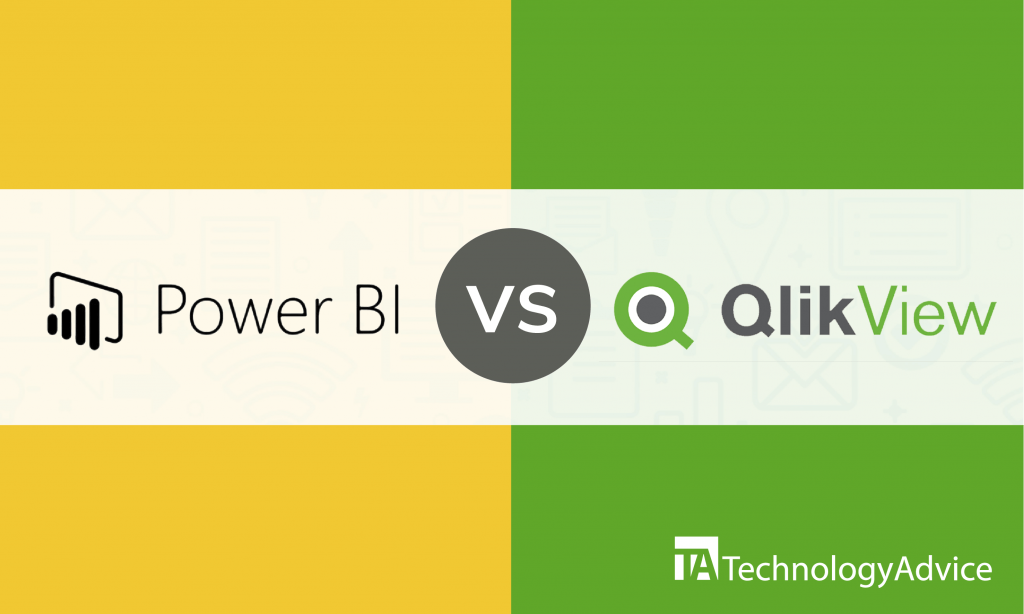- categoryBusiness Intelligence
- ContentComparison
Choosing the right business intelligence (BI) solution for your business can be daunting. There are hundreds of solutions out there, and many of them offer the same or similar features. In this article, we’ll take a closer look at the features of two top-rated BI solutions: Power BI and QlikView.
Want to speed up your software search? Use our Product Selection Tool to get a free shortlist of BI software recommendations that best fits your company. Getting your recommendations is easy and takes five minutes or less.
Power BI and QlikView: An overview
Power BI was developed by Microsoft in 2010 under the name Project Crescent. The first version was released in 2011. Later on, Microsoft renamed it Power BI and made it publicly available in 2015. Power BI is one of the leading BI software products today.
QlikView was initially named Quikview in 1994, but was renamed in 1996. When QlikView was created, its main function was to gather in-depth data analysis from different systems. Eventually, it evolved into a business intelligence software where it now enjoys top ratings from multiple software review sites and users alike.
Comparison of features and capabilities
Power BI and QlikView have several features that make business analysis more precise. These features include data connection, report creation, and data analytics.
Data connectors
Power BI offers a Get Data feature that lets users obtain data from different sources. Some of the data sources that can be connected to Power BI are:
- SQL Server
- MySQL database
- Excel
- Azure
- Text/CSV
- XML
Microsoft makes regular updates to the available data connectors for Power BI, so new data connectors are constantly being added.
QlikView offers the Connectors feature to help users collect data from spreadsheets, databases, websites, applications, and other sources. Data sources for QlikView include:
- Amazon S3
- Azure SQL
- Google Ad Manager
- Google BigQuery
Additional data connectors may be linked to QlikView through their partnerships with third-party services and applications.
Report creation
You can easily create informative reports in Power BI by using the system’s drag-and-drop interface. Users can create visualizations in the form of charts, tables, and graphs for a better representation of data.
QlikView offers the Report Editor feature that lets users create accurate reports using multiple charts and graphs. Users can customize the layout of reports in QlikView. The Report Editor lets users create two kinds of reports: document and user reports. Document reports may be shared with other team members, while user reports are only accessible to their owners.
Read also: Qlik vs. Tableau: Comparison Of Key Differences
Data analytics
Power BI lets users conduct data analysis using the Data Analysis Expressions (DAX) function. This feature from Power BI helps companies identify patterns and trends. You can also forecast future trends with the data analytics feature.
QlikView also lets businesses perform data analysis through its Guided Analytics feature. This data analytics feature lets a company gain more in-depth insights into their business with the help of a developer or programmer. The capabilities of QlikView’s data analytics can be expanded when partnered with another product from Qlik, Qlik Sense, or through third-party applications.
Integrations
Power BI integrates with other Microsoft products. It also integrates with software products and applications for digital signing, customer relationship management, data management, accounting, and voice messaging:
- Microsoft Teams
- Office 365
- Microsoft Dynamics CRM
- Salesforce Sales Cloud
- Xero
- Insightly
- Twilio Communications Cloud
- REACH
- ScreenCloud
QlikView can be integrated with powerful software applications that can be used for surveys, data analytics, sales automation, talent management, supply chain management, and enterprise resource planning:
- Salesforce Sales Cloud
- Saba Learning
- Alteryx
- In4Suite
- Key Survey
- CrossKnowledge Learning Suite
- Inzata
- Avercast
- CARTO
Power BI vs. QlikView, which BI software should you trust for your business?
Power BI comes with built-in self-service data analytics, which makes it a great choice if you prefer to use a single system for various business needs. However, if you want to truly tailor your BI software to your liking, QlikView might be the more logical choice. QlikView gives you the freedom to customize data analytics and visualizations through coding.
QlikView might be better for businesses who employ software developers or data scientists. This BI software has robust analytics capabilities, but these capabilities may only be realized in the presence of technically savvy users. Users with little to no programming background will probably be more comfortable using Power BI. The drag-and-drop functionality of this system makes it easier for non-technical users to customize reports and create data visualizations.
Not sure Power BI or QlikView is right for you? Use our Product Selection Tool to get a free shortlist of the best business intelligence software for your business. In five minutes or less, we’ll match you with five vendors we think you’ll love.
